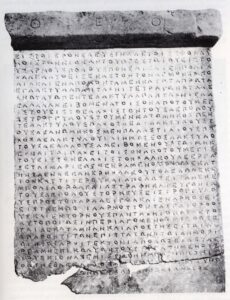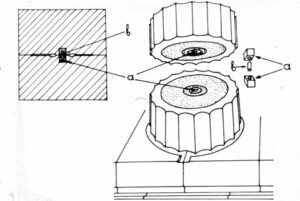
The first standard: Looking back at the dawn of conformity assessment
![]() A “standard” nowadays is considered a document — established by (a consensus of) subject matter experts and sometimes becomes approved by an authority (regulator) — that provides guidance on the design, use or performance of materials, products and/or processes.
A “standard” nowadays is considered a document — established by (a consensus of) subject matter experts and sometimes becomes approved by an authority (regulator) — that provides guidance on the design, use or performance of materials, products and/or processes.
Organizations are developing products and/or are offering services to satisfy consumer requirements based on standards, on client requirements and on relevant applicable regulations. In order to safeguard the quality, reliability, consistency and safety of those products and services “quality control” was introduced. Quality control is the system of maintaining standards in manufactured products by testing a sample of the output against the specification.
Standardization, certification, quality control of products, consumer protection: Strange though it may seem, these are not modern discoveries of our technological culture!

The research of many scholars shows that their roots stretch far back into antiquity and that they were mastered by societies with a high cultural and advanced technological level: Parthenon, for example, the temple on the Athenian Acropolis that is considered the zenith of classical architecture, couldn’t be built without such a “quality” culture. Technical advancement of humanity is inconceivable without the application of norms to ensure the quality of the materials and the processes used. Historical evidence shows that the ancient Greek civilization devised a statutory framework for “quality” — a basic requirement for the design and construction of the masterpieces of that era.
During classical times in Greece, there was a mechanism in place for the quality control, standardization and certification of items produced and sold in many cities-states around the Mediterranean Sea. The ancient Greeks applied standards with very strict specifications supported by regulations with harsh penalties for anyone who did not comply. These standards covered the entire range of products made at that time — from metals and their alloys to agricultural products, foods, beverages, currency even building products! This might seem strange, but it is nevertheless true.
It is worth mentioning that in 1863, D. Filios discovered an inscribed stele of the 4th century BC in the city of Eleusis. The study of its text led to a very interesting conclusion; this inscription is the most ancient example of a technical standard, with strict specifications for the manufacture of building materials known as “empolia” and “polio”; that is, the bronze fittings/dowels used to join the drums of the columns of the ancient buildings. The specifications concerned the origin, the chemical composition and manufacturing process of the bronze fittings.

As an example, the inscription mentions the following interesting fact: “to shape hard bronze on the lathe into cylindrical dowels (b) according to a particular sample…” which is a reference to the manufacturing process but also provides information that a “reference material/standard” was used!
Most important, however, is the reference to the origin of the raw material and its composition as prescribed in the inscription: “the copper must be produced in Marius, Cyprus, (a large commercial and metallurgical center in antiquity) and of its twelve parts, eleven were to be of copper and one of tin.” That is, approximately 92 percent copper and eight percent tin. That was important not only from the structural point of view but also from the financial considering that the price of tin was seven times higher than copper!
Further study of this inscription’s text leads to the astounding conclusion that standards and quality control principles were applied at least 2,600 since our ages!
Interesting times indeed!
References:
“Ancient Greek Standards”, George Varoufakis, Professor of the University of Athens, 1999
“Engineering and Technology in Ancient Greece”, Christos D. Lazos, 1992
“The Inscribed Stele of Eleusis and Quality Control in Antiquity”, Archaeology Magazine, June 2014
“Eleusis”, D. Philios, 78-79, Athens, 1896






